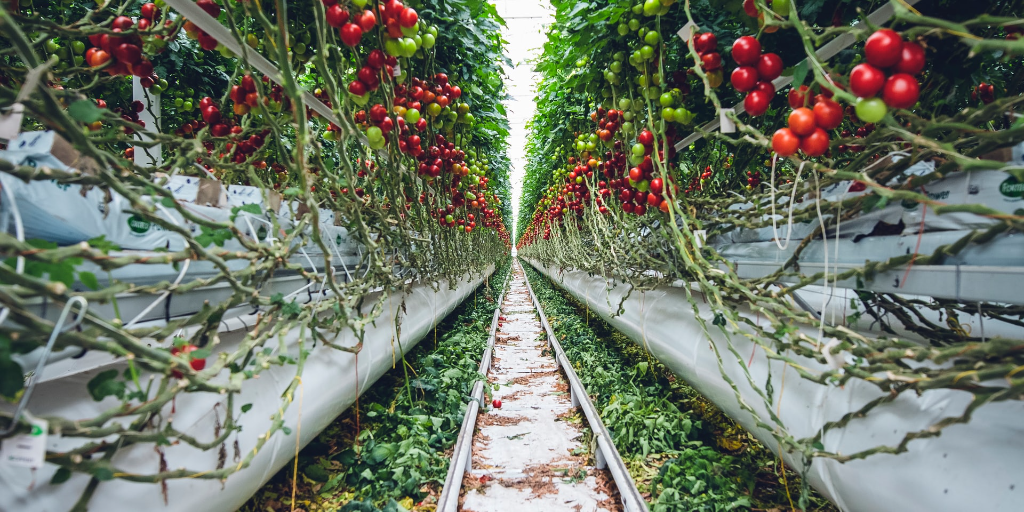The promise of vertical farming
Lesson summary
Hi there everyone, I’m Jeff and you are listening to Plain English. At Plain English, we help you upgrade your English with lessons about current events and trending topics. This is lesson number 417, so that means you can find the full lesson at PlainEnglish.com/417.
Coming up today… a new way to farm. It requires—get this—no soil. As always, we have an English expression. Today that is “take up space” and JR has a song of the week. Let’s get going.
A warehouse is the new farm
Vegetables grow in gardens and fields. They derive nutrients from the soil, rainfall, and sunshine. Modern farmers can assist the process of growing plants with fertilizer, irrigation, and pesticides. But the basics have been the same since the dawn of the agricultural age: seeds, soil, sunshine, and rainfall.
Now, some entrepreneurs think it doesn’t have to be that way. And in some of the world’s biggest cities, vegetables sold in local markets are grown locally under LED lamps and are given all the nutrients they need to grow in precise measurements—no soil needed. And rather than being spread out horizontally across a field, these plants are stacked high, one on top of another, in a warehouse. This type of farming is catching on in places ranging from San Francisco to Dubai, and Switzerland to Shanghai.
Welcome to the phenomenon known as “vertical farming.” If a horizontal farmer uses a tractor, a vertical farmer uses a forklift.
A vertical farm is typically a warehouse where vegetables are grown for human consumption. They can be large or small. In San Francisco, a company named Plenty has a warehouse measuring 8,000 square meters, about the size of a large supermarket. But other vertical farms are packed into small shipping containers in big-city parking lots.
There are several advantages to vertical farms. First, they take up a lot less space than traditional farms. The Plenty warehouse in San Francisco, for example, yields as much produce as a traditional farm over 300 times larger. Second, they are closer to consumers, so each vegetable has to travel a shorter distance to take its rightful place in our salad bowls. This reduces costs and greenhouse gas emissions.
Agriculture requires intense irrigation and watering. But so much of the water sprayed onto a large field is wasted; only a portion of it is slurped up by the roots of the plants. In a vertical farm, there is no waste. Plants are given all the water they need to grow—but no more. Aerofarms, based in New Jersey, says it can grow plants with 95% less water than they would require in a field.
The same precision that goes into watering plants also goes into feeding them. In a vertical farm, there’s no soil because there’s no need for it. The plants’ roots are instead suspended in a solution of water and nutrients, carefully calibrated to give the plants exactly what they need to grow efficiently.
There’s no soil, so guess what else isn’t in an urban farm. That’s right: weeds, bugs, or anything else that can threaten the health of the plant. And without weeds, bugs, and other pests, there’s no need for chemical pesticides, so the resulting produce is healthier for humans to consume.
There are no seasons in a vertical farm, either, so the growing season need not stop during the cold New York winters. And with water and nutrients given out in ideal proportions, the conditions for growth are optimized, and produce grows faster than it would otherwise grow in a field.
With all those advantages, why, then, isn’t our whole salad bowl farmed in a warehouse? Well, there are several limitations. First, the science is still in the early-going. At this point, vertical farms typically only grow produce that’s light, high-value and relatively easy to grow. That means crunchy greens like lettuce, kale, and arugula, or herbs like basil and mint. These are easier to grow and easier to fit in the high stacks of a vertical farm.
Another limitation is LED lighting. There’s no sunshine in a vertical farm, but the plants still need light to grow. They get that from LED lights. While the cost of LED lighting is falling steadily, the light fixtures are still a big expense.
And that brings us to another high cost input: electricity. In many places, the electricity used in vertical farms is produced from fossil fuels, denting the environmental benefit of indoor farming.
For now, it only makes economic sense to grow high-value, lighter crops for which city-dwellers will pay a premium. But as the technology improves and costs come down, more and more types of produce could be grown closer to home, in a much greener fashion, and at a more appetizing price.
Vertical strawberry fields
Berries should be a good candidate for urban farming. Think about it. They’re difficult to grow in a field; they’re expensive to pick; and there’s a lot of waste since they’re delicate and get bruised easily in shipping.
Here in a cold climate, we can get “strawberries” all year round. In the winter, of course, a strawberry has to be shipped from California or someplace warm. To stay fresh on the Chicago shelves, the strawberry needs to be picked before it’s ripe. So, during the off-season, the strawberries on our shelves are pinkish on the outside and not exactly bursting with flavor on the inside.
Growing berries closer to home would mean that they could be picked closer to their peak ripeness, and then they’d be much more flavorful in my Cheerios .
Learn English the way it’s really spoken

